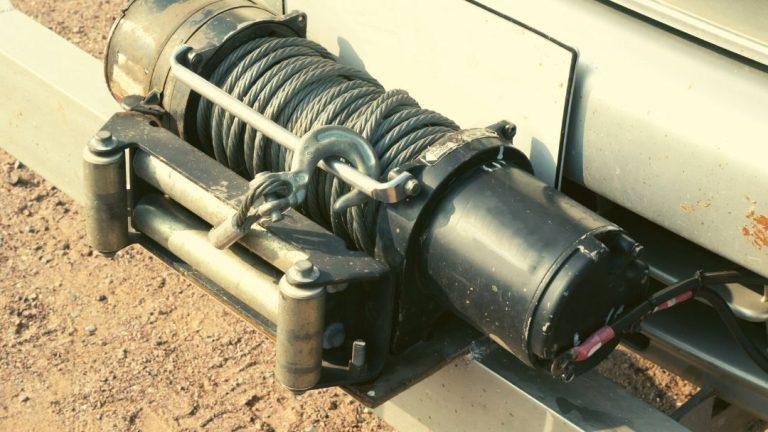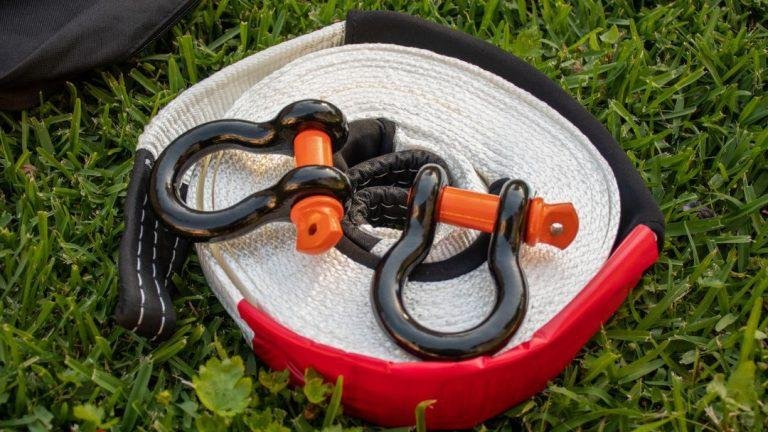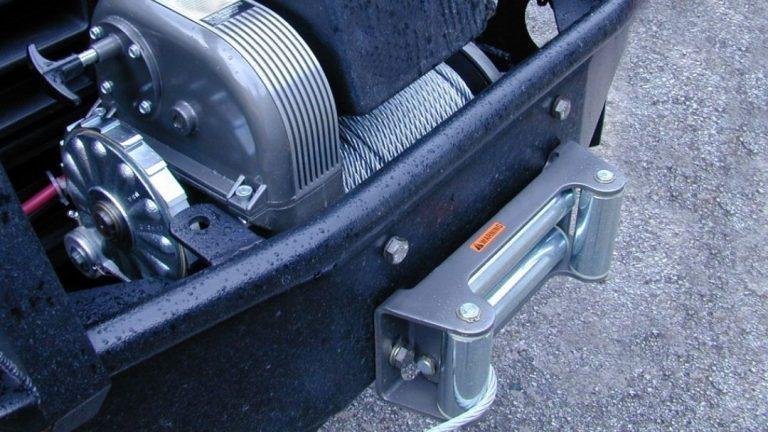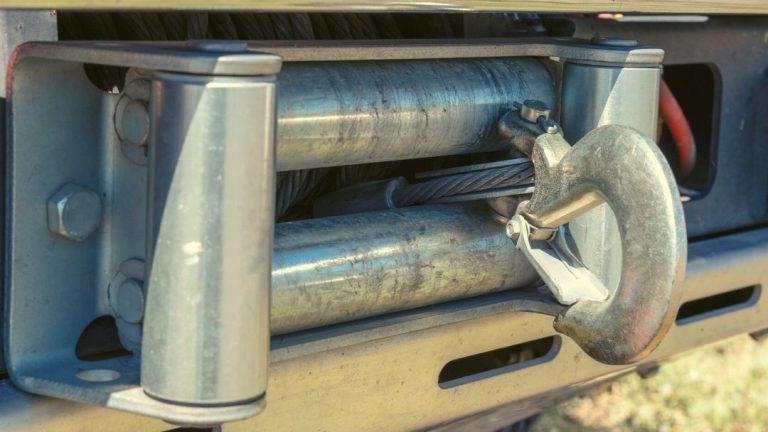All atv winches do not mount in the same way. Atv winches have different mounting systems based on the model and brand.
These winches require specific mounting kits for proper installation and compatibility with the atv’s frame. Atv winches are essential equipment for off-roading enthusiasts who need assistance in pulling heavy loads or getting out of sticky situations. However, not all atv winches mount in the same way.
Each model and brand may come with a different mounting system, requiring specific kits for installation. We will explore the various mounting options available for atv winches and discuss the importance of choosing the right mount for your vehicle. Whether you’re a beginner or a seasoned atv rider, understanding the different mounting systems will help you make an informed decision when selecting an atv winch. So, let’s dive into the world of atv winch mounts and discover the options available to you.
Different Types Of Mounting Systems
Atv winches come with different types of mounting systems, meaning they do not all mount the same. Understanding the variations in mounting systems can help you choose the right one for your atv winch installation.
Atv winches can be mounted to your vehicle using different types of mounting systems. Each system offers its own advantages and serves a specific purpose. Understanding the various mounting options available will help you choose the right one for your atv winch.
In this section, we will explore three common types of mounting systems: bumper mounts, front rack mounts, and chassis mounts.
Bumper Mounts:
- Bumper mounts are a popular choice for atv winches due to their convenience and accessibility.
- Easy to install on the front or rear bumpers of your atv.
- Provides a secure and stable platform for your winch.
- Ideal for off-roading situations where you may need to recover your atv or assist others.
- Offers additional protection to your atv’s front or rear end.
Front Rack Mounts:
- Front rack mounts provide a mounting solution that is integrated with the front cargo rack of your atv.
- Offers a neat and organized appearance without any additional attachments.
- Easy access to the winch controls from the front of your atv.
- Does not interfere with other attachments or cargo on the atv.
- Suitable for users who require a winch for occasional use or lighter loads.
Chassis Mounts:
- Chassis mounts provide the most stable and secure mounting option for atv winches.
- Installed directly onto the frame of the atv, offering maximum structural support.
- Ideal for heavy-duty towing and recovery operations.
- Provides a solid connection point that can withstand the strain of winching.
- Offers excellent weight distribution and stability during winching operations.
Each type of mounting system has its own advantages and considerations. By understanding the differences between bumper mounts, front rack mounts, and chassis mounts, you can choose the right option based on your specific needs and preferences. Whether you require a winch for recreational purposes or heavy-duty tasks, there is a mounting system available to suit your requirements.
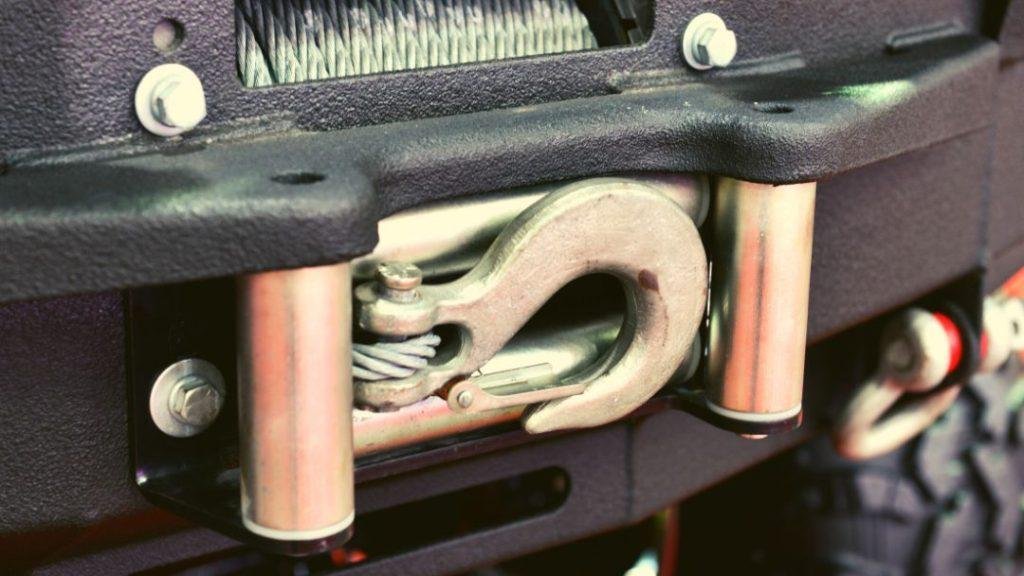
Compatibility With Atv Models And Brands
Atv winches may not mount in the same way across all models and brands, so compatibility should be considered when purchasing. Make sure to check the specific mounting requirements of your atv before selecting a winch.
When it comes to mounting atv winches, it’s important to consider the compatibility with different atv models and brands. Understanding your atv’s specifications and the available winch mounting options for popular atv brands can help ensure a perfect fit for your off-road adventures.
Let’s dive into the details!
Understanding Your Atv’S Specifications
Before installing an atv winch, you need to be familiar with your atv’s specifications. Here are some key points to consider:
- Atv weight capacity: Check the maximum weight capacity of your atv to determine the winch capacity you need. It’s crucial to have a winch that can handle the weight of your atv and any additional loads.
- Mounting space: Assess the available space on your atv for winch installation. Different atv models may have variations in the available mounting areas, such as front or rear racks, bumpers, or specialized winch mounting points.
- Power requirements: Understand the power requirements of your atv’s electrical system. Ensure that the winch you choose is compatible with your atv’s voltage and ampere capacity.
- Winch mounting points: Check if your atv has pre-drilled winch mounting points. Some atvs come with factory-made mounting holes to simplify the winch installation process. If not, you may need to consider additional mounting options.
Winch Mounting Options For Popular Atv Brands
Different atv brands may have specific winch mounting options. Here are some popular atv brands and the available mounting options they offer:
- Polaris: Polaris atvs often have winch-compatible front and rear bumpers or racks. Some models even have integrated winch mounting plates for convenient installation.
- Honda: Honda atv models generally provide winch mounting options on their front and rear bumpers. These mounting points are designed to accommodate specific winch sizes and models.
- Yamaha: Yamaha atvs often feature front and rear bumpers with built-in winch mounts. These mounts are designed to fit yamaha’s own winches or winches from compatible third-party manufacturers.
- Can-am: Can-am atvs typically come with winch-compatible bumpers or winch mounting plates on the front. These mounting options allow for easy winch installation without the need for additional modifications.
- Kawasaki: Kawasaki atvs may have front or rear bumpers with pre-drilled winch mounting holes. Additionally, some models offer optional winch mounting kits for a hassle-free setup.
Remember to check with your atv manufacturer or consult the owner’s manual to ensure compatibility before purchasing an atv winch. This will help you find the right winch mounting option that suits your atv model and brand.
Now that you have a better understanding of compatibility with different atv models and brands, you can confidently choose the right winch and mounting option for your off-road adventures. Happy riding!
Installation Process And Equipment Needed
Atv winches have unique mounting requirements, and not all of them mount the same way. The installation process varies depending on the winch brand and model. To ensure a proper installation, specific equipment such as winch mounts and hardware may be needed.
Tools Required For Mounting Atv Winches:
- Socket set with various sizes
- Screwdrivers (both flathead and phillips)
- Wrenches (open-end or adjustable)
- Winch mounting plate
- Winch mounting bolts
- Winch hook strap or clevis
- Locking pliers
- Drill with drill bits
- Wire cutters
The installation process of an atv winch involves several steps. To ensure a smooth installation, it is essential to have the right tools at your disposal. Here are some tools you’ll need for mounting atv winches:
- Socket set with various sizes: This will come in handy for securing bolts and nuts during the installation process.
- Screwdrivers (both flathead and phillips): These will be useful for removing and attaching screws, depending on the type of fasteners used.
- Wrenches (open-end or adjustable): You’ll need wrenches to tighten and loosen bolts and nuts during the installation.
- Winch mounting plate: This plate serves as a foundation for attaching the winch to your atv.
- Winch mounting bolts: These bolts securely hold the winch mounting plate to your atv frame.
- Winch hook strap or clevis: This is used to connect the winch hook to the appropriate attachment point on your atv.
- Locking pliers: These can be handy for holding nuts or bolts in place while tightening or loosening.
- Drill with drill bits: You might need to drill holes in the mounting plate or your atv frame to ensure proper installation.
- Wire cutters: These will be necessary if you need to trim or adjust the length of the winch wires during installation.
Step-By-Step Guide On Installing Atv Winches:
Follow these simple steps to successfully install an atv winch on your vehicle:
- Select a suitable location for mounting the winch on your atv. Ensure that it does not obstruct any critical components or cables.
- Attach the winch mounting plate to the designated location on your atv frame using the appropriate mounting bolts.
- Position the winch on the mounting plate and secure it with the provided bolts.
- Connect the winch wires to the corresponding terminals on the winch motor according to the manufacturer’s instructions.
- Route the winch wires towards the atv’s battery, making sure to avoid any potential hazards or moving parts.
- Connect the winch wires to the appropriate terminals on the atv battery, ensuring a secure and proper connection.
- Test the winch by engaging and disengaging it to ensure it is functioning correctly.
- Adjust the winch hook strap or clevis to the appropriate length and attach it to a suitable attachment point on your atv.
- Double-check all mountings, connections, and wire routing to guarantee a safe and secure installation.
- Clean up any excess debris or tools from the installation process and store them properly.
Tips For A Smooth Installation Process:
To make your atv winch installation process easier and hassle-free, consider the following tips:
- Carefully read and understand the manufacturer’s instructions before starting the installation.
- Take your time and follow each step diligently to ensure proper installation and avoid potential risks.
- Gather all the necessary tools and have them nearby before starting the installation.
- If you encounter any difficulties or uncertainties during the process, consult the manufacturer’s customer support or seek professional assistance.
- Double-check all connections, bolts, and wires for tightness to prevent any mishaps during use.
- Consider using thread-locking compound on mounting bolts to ensure they stay securely in place.
- Protect electrical connections with shrink tubing or electrical tape to prevent corrosion or damage.
- Regularly inspect and maintain your atv winch to extend its lifespan and ensure optimal performance.
By following these guidelines, you’ll be able to mount your atv winch properly and enjoy its usefulness during off-road adventures. Remember to prioritize safety throughout the installation process and take your time to complete the task accurately.
Frequently Asked Questions Of Do All Atv Winches Mount The Same
What Size Is A Standard Winch Mount?
A standard winch mount typically comes in a universal size that fits most vehicles. It is designed to be compatible with various winch models and can support different weight capacities. The exact size may vary depending on the manufacturer and specific model, but it is commonly around 20 inches wide and 8 inches tall.
It is essential to measure your vehicle’s front bumper and consult the winch mount’s specifications to ensure proper fitment.
What Is The Bolt Pattern For A Winch Mount?
The bolt pattern for a winch mount varies depending on the specific winch and vehicle. The bolt pattern refers to the arrangement and number of bolts required to secure the winch to the mount and vehicle. It ensures a secure and precise fit for optimal performance.
To determine the bolt pattern for a winch mount, you need to check the specifications provided by the winch manufacturer. This information is typically available in the winch manual or on the manufacturer’s website. It is crucial to ensure that the winch mount is compatible with the vehicle’s existing bolt pattern.
If you’re unsure about the correct bolt pattern or installation process, it is recommended to consult a professional or seek guidance from an experienced winch installer. Remember, a proper fit and secure attachment are essential for the safe and efficient operation of your winch.
What Size Winch Does An Atv Need?
An atv generally needs a winch with a pulling capacity of 3,000 to 4,000 pounds. The size of the winch required depends on the weight of the atv and the intended use. For lighter atvs, a 2,500-pound winch may suffice, but larger and heavier atvs may require a winch with a higher pulling capacity.
It is important to consider factors such as the terrain, load, and potential obstacles when determining the appropriate winch size. It is recommended to consult the atv manufacturer’s guidelines and recommendations to ensure the right winch size is selected for safe and efficient use.
What Is The Difference Between A Winch And An Atv Winch?
A winch and an atv winch are essentially the same equipment, but with a specific application. The main difference lies in their usage and compatibility. A winch is a device used to pull or haul heavy objects, typically found on trucks or larger vehicles.
On the other hand, an atv winch is specifically designed for use on all-terrain vehicles (atvs). It is smaller in size and can be easily mounted on the front or rear of an atv. This allows atv riders to easily recover their vehicles from difficult or challenging terrain.
The atv winch is typically lighter in weight and has a lower pulling capacity compared to a standard winch. It is important to choose the correct winch for your specific vehicle and application to ensure safe and effective usage.
Conclusion
Not all atv winches mount the same, and it is important to consider various factors when choosing the right winch for your needs. The mounting options available for atv winches can vary, including front bumper mounting, receiver hitch mounting, or a combination of both.
The type of mounting you choose depends on your atv model, desired use, and personal preferences. It is essential to ensure compatibility between the winch and the mounting system to ensure a secure and effective installation. Additionally, considering factors like winch capacity, rope or cable type, and control options will help you make an informed decision.
Remember to always refer to the manufacturer’s instructions for proper installation and maintenance. With the right winch and mounting system, you’ll be equipped to tackle any off-road adventure with confidence and ease.


